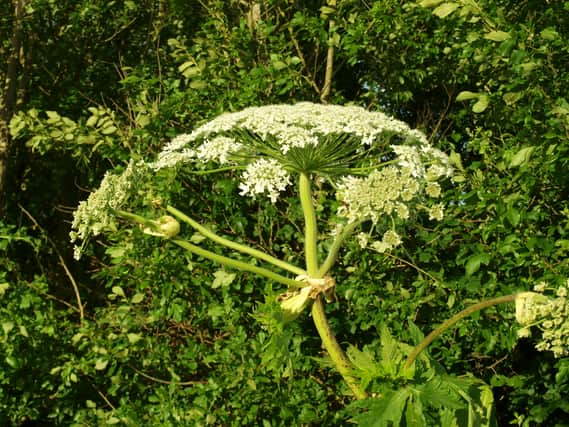Glasgow’s growing Hogweed problem - and how to deal with it


The invasive, toxic weed, also known as Heracleum mantegazzianum, has taken hold in areas around the city and has been left untreated in some parts, particularly in some parks and river banks.
While Glasgow City Council can take action if the weed is on its land, it is up to the owners of private land to take care of the issue.
Advertisement
Hide AdAdvertisement
Hide AdWhy it matters: Giant Hogweed can cause injuries to children and adults, including nasty burns and severe blisters on the skin.
What does it look like: The plants, introduced to the UK in the 19th century, tend to grow to around 3-5ft tall. They have large flat flower heads, which have hundreds of small white flowers on them.
What should I do: People are not advised to cut it down or to try and dig out the roots - this could expose the plant’s toxic sap. Herbicides are seen as the best treatment and can be purchased from garden centres. If the plant is on private land you should contact them about this - you can find out who owns what land HERE. If you find Giant Hogweed on land that belongs to or is maintained by the council, contact them about it.
Where to find it: An online interactive map was recently launched to help people find Giant Hogweed in their area. Click HERE to find out more.
Advertisement
Hide AdAdvertisement
Hide AdWhat to do if you’ve touched Giant Hogweed: A reaction can start as soon as 15 minutes after touching the weed. If you have touched it, you are advised to wash the area with soap and cold water as soon as possible. You are also advised to keep the affected area away from sunlight for around two days. If you get it in your eyes, you are advised to seek medical help.
Comment Guidelines
National World encourages reader discussion on our stories. User feedback, insights and back-and-forth exchanges add a rich layer of context to reporting. Please review our Community Guidelines before commenting.